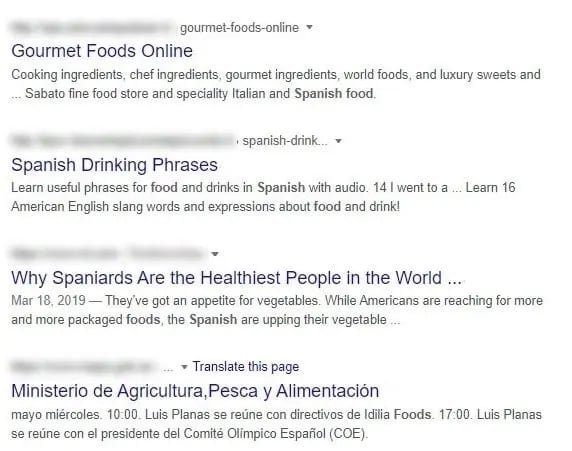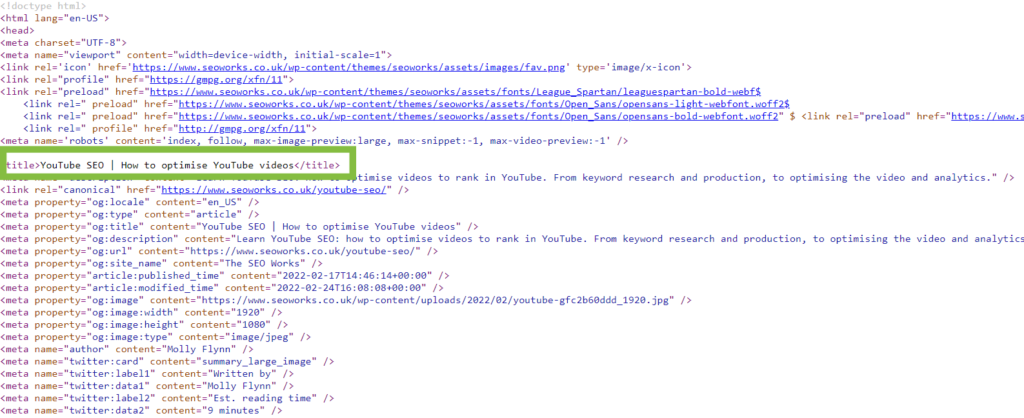Unlocking the Search Engine Mystery: How the Right Meta Tag Can Supercharge your Google Ranking
In the competitive world of search engine optimization (SEO), every little detail matters. And one often overlooked, yet crucial element, is the meta tag. This tiny snippet of code, invisible to users but not to search engines, plays a significant role in how Google perceives your website and ranks it in search results.
Demystifying Meta Tags:
A meta tag is a snippet of HTML code embedded in the header section of your web page. It provides information to search engines about your page's content, including its title, description, and other key details. While not directly displayed to users, it influences how your page appears in search results and ultimately affects your click-through rate (CTR).
Meta Description: This tag provides a brief summary of your page content, appearing under the title in SERPs. It should be concise, informative, and compelling to encourage clicks.
Here's how the right meta tag can supercharge your Google ranking:
1. Enhances CTR:
A compelling and informative meta description acts as a mini advertisement for your page, convincing users to click through. By including targeted keywords and accurately reflecting your page's content, you create a more enticing snippet, leading to a higher CTR and better ranking.2. Improves Search Engine Relevance:
Meta tags help search engines understand the context and content of your page. By including relevant keywords in your title and description, you signal to Google that your page is relevant to specific search queries, resulting in a higher ranking for those keywords.

3. Optimizes User Experience:
A clear and concise meta description provides users with a quick overview of your page content, allowing them to decide if it's relevant to their search query. This not only improves user experience but also reduces bounce rates, another factor that Google considers when ranking pages.4. Builds Brand Recognition:
A consistent meta tag format across your website helps establish brand recognition in search results. By including your brand name in your title and description, you increase brand awareness and user trust, leading to a higher click-through rate and potentially improving your ranking.Optimizing Your Meta Tags:
1. Keyword Research:
Research relevant keywords your target audience uses to find information related to your website. Include these keywords naturally within your meta titles and descriptions.
Some key keyword metrics:
- Estimated Monthly Search Volume: A measure that indicates the approximate number of times a term or phrase is searched for on a search engine each month is called "estimated monthly search volume." This is helpful for evaluating a keyword's competition as well as its popularity and potential traffic.
- Keyword Difficulty: How difficult will it be to rank on the first page of Google search results for this keyword? This is useful for identifying the feasibility and potential success of ranking for a keyword in search engine results.
- CPC (Cost-Per-Click): Online advertisers, such as those using Google AdSense, utilise a pricing mechanism called cost per click (PPC) in which they pay each time a searcher clicks on an advertisement. This price structure is applied to Google's search engine results pages, where the competition, targeting, and keywords all affect the cost-per-click (CPC) of a given ad. CPC data can be used by advertisers to estimate the cost and ROI of their adverts in the long run.
- Country-Specific Results: The volume and complexity of searches for nearly every keyword phrase differ depending on the country in which the searcher is situated. The monthly search volume and keyword difficulty for the United States (US) are displayed in all search results by default when using this keyword tool. To assist with your local SEO strategy, there is a dropdown menu next to the search box where you can choose to view country-level data for any country in the world.
2. Title Tag Tips:Keep it concise (around 50-60 characters) to avoid truncation in SERPs.
- Include your primary keyword naturally.
- Be informative and descriptive, accurately reflecting your page content.
- Consider using a call to action to encourage clicks.
3. Meta Description Magic:Maintain a length of around 150-160 characters to prevent Google from cutting it off.
- Include relevant keywords strategically throughout the description.
- Create a compelling and informative message that entices users to click.
- Highlight unique selling points and benefits of your page content.
4. Header tags (H1, H2, H3): Organize content and improve SEO with header tags. They also explain your page structure to website visitors.
Use H1 for the page title, H2, H3, etc. for subsections. Creating a logical hierarchy.
Header tags help search engines understand content structure and keyword relevancy, so employ them intelligently.
5. Meta Robots Attribute Explained: Controlling Crawling, Indexing, and Snippets
The meta robots attribute is a powerful tool for webmasters to control how search engines interact with their pages. It's like a whisper to search bots, guiding them on whether to crawl, index, or display snippets of your content in search results.
Understanding the Directives:
- index/noindex: Tells bots whether to include the page in their searchable index.
- follow/nofollow: Determines if bots should follow links on the page to discover and index other pages.
- noarchive: Prevents bots from saving a cached copy of the page.
- nosnippet: Stops bots from showing a snippet of your page's content in search results.
- max-snippet: Specifies the maximum length of a snippet the bot can display.
Benefits of Using Meta Robots:
- Prevent duplicate content: Use nofollow on internal links to avoid confusing search engines and harming SEO.
- Protect confidential content: Use noindex for password-protected pages or sensitive information.
- Control snippet appearance: Use nosnippet if you prefer users to click directly to your page for the full content.
- Optimize crawling budget: Reduce server load by preventing bots from crawling unimportant pages.
Important Points:
- Meta robots is a hint, not a rule. Search engines may choose to ignore it.
- It's not a security measure. Use proper authentication and authorization for private content.
- Always test your robots meta tags to ensure they work as intended.
Examples:
<meta name="robots" content="noindex,nofollow">will prevent indexing and following links on the page.<meta name="robots" content="max-snippet:200">will limit the snippet length to 200 characters.
Meta robots is a powerful tool for fine-tuning your website's search engine visibility. Use it strategically to enhance your SEO and control how your content appears in search results.
6. The Meta Viewport Tag: Your Tiny Giant for Responsive Design
Ever visited a website on your phone and had to squint and zoom just to read the text? That's where the meta viewport tag comes in, a tiny piece of code with a big impact on mobile-friendliness.
What it does:
- Controls how a web page is displayed on different screen sizes and devices.
- Prevents the user from having to zoom in or out to see the content properly.
- Enhances the user experience on mobile devices.
Key players:
- width: Defines the viewport width in pixels or the special value
device-width. - initial-scale: Sets the initial zoom level when the page loads.
- minimum-scale: Specifies the minimum zoom level allowed.
- maximum-scale: Sets the maximum zoom level allowed.
Benefits of using it:
- Improves SEO: Mobile-friendliness is a ranking factor for Google and other search engines.
- Boosts conversion rates: Users are more likely to stay on a website and convert if they can easily access it on their mobile device.
- Reduces bounce rates: No more frustrated users leaving because they can't read the content!
Example:
<meta name="viewport" content="width=device-width, initial-scale=1.0">
This code will tell the browser to use the device's width for the viewport and set the initial zoom level to 1.0 (no zooming).
Pro Tips:
- Use responsive design principles alongside the viewport tag for optimal results.
- Test your website on different devices and screen sizes to ensure it looks good everywhere.
- Keep your viewport tag simple and avoid unnecessary attributes.
The meta viewport tag is a small but mighty tool for any website owner who wants to ensure a seamless user experience on all devices. Don't underestimate its power - it can make a big difference in your mobile traffic and SEO success!
7. Additional Meta Tags:
While less crucial for ranking, other meta tags can enhance your website's visibility:Meta Keywords: Though not directly used by Google for ranking, they can still be beneficial for some search engines.
Meta Robots: This tag instructs search engine crawlers on how to index and display your page.

5. Canonical Tag: Avoiding Duplicate Content Penalties
Duplicate content can be detrimental to your SEO efforts. The canonical tag helps avoid this by specifying the original version of a page to search engines. This prevents duplicate content penalties and ensures only the intended version is indexed.
Beyond Meta Tags:
Optimizing your meta tags is just one step in achieving optimal SEO. Ensure high-quality content, relevant internal linking, and a user-friendly website design to complement your meta tag efforts.
Remember:Uniqueness: Each page should have unique meta titles and descriptions.
Consistency: Maintain consistent keyword usage throughout your website.
Regular Updates: Review and update your meta tags periodically to reflect changes in your website content or target keywords.
By mastering the art of meta tags, you can unlock the door to higher website ranking, increased organic traffic, and ultimately, achieving your online goals.
Now, let's explore some key tips for crafting the perfect meta tag:Keep it concise: Your title should be under 60 characters, and your description under 160 characters to avoid truncation in search results.
Integrate relevant keywords: Include targeted keywords naturally in both your title and description, but avoid keyword stuffing.
Focus on clarity and accuracy: Clearly describe your page content in a way that accurately reflects what users will find.
Make it enticing: Use strong verbs and action words to encourage users to click through.
Target specific search queries: Research relevant keywords and tailor your meta tags to match user search intent.
Optimize for different devices: Ensure your meta tags are mobile-friendly and display properly across all devices.
By following these tips and harnessing the power of the meta tag, you can unlock the door to improved Google ranking and achieve greater online visibility for your website. Remember, SEO is a continuous process. Regularly review and update your meta tags to reflect any changes in your website content or target keywords for optimal results.
Conquer the search engine mystery and watch your website climb the ranks!
.png)